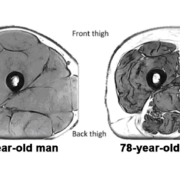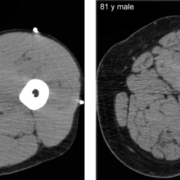HIIT and Fat Loss
One of the “facts” exercise professionals will tell you is that there is no such thing as spot reduction; by that I mean you cannot target a specific area of your body, let’s say your abdominal area, and lose fat by doing a targeted exercise such as sit-ups or leg lifts. You can make the muscles underneath the skin stronger for sure, but there doesn’t seem to be any evidence that you can reduce the amount of fat in that area.
With 35 years of experience in the field, I would say that requires a qualified answer—it needs to be qualified with the word yet. There hasn’t been a study that proves that you can reduce fat in a specific area yet. Is it theoretically possible? Yes, I think it is. The problem is this: who would do the high quantity of exercise focused on one area long enough per workout session to do themselves any good? It may be that we’ve approached it all wrong by focusing on resistance exercise. Let’s take a look at another study that compared high-intensity interval training (HIIT) on a cycle ergometer versus a treadmill.
Researchers began with two questions. Is there any difference in the fat mass in specific areas of the body after training using a cycle ergometer (an exercise bike that measures the energy output of the cyclist) or a treadmill? In addition to that, is there any change in beneficial microbes in the microbiome after training?
Let’s take a look at what they did. Researchers recruited 16 men with a mean age of 54 and initial BMI of 29.9. After assessing initial fitness level, body fat, and body-fat distribution using the DEXA scan, and taking an initial stool sample for analysis of the microbiome, the subjects were randomly assigned to the bike or the treadmill. To make sure that there were no significant changes in diet, the subjects were required to maintain their typical diet and do seven-day diet records periodically during the study.
Think of this as intervals for the everyday exerciser. The HIIT bike program required them to do ten intervals for 45 seconds each at 80–85% of the maximal heart rate (MHR), and then a 90-second active recovery, or a HIIT running program which were nine intervals for 45 seconds at 80–85% of MHR and again with 90 seconds of recovery between intervals. They were to do this exercise under supervision three times per week for 12 weeks. The goal was to have all exercisers use the same number of calories during the workouts, whether cycling or running. The subjects were then retested to examine the differences if there were any. What did they find? I’ll tell you on Saturday.
What are you prepared to do today?
Dr. Chet
Med Sci Sports Exerc 2024 May 1;56(5):839-850.









